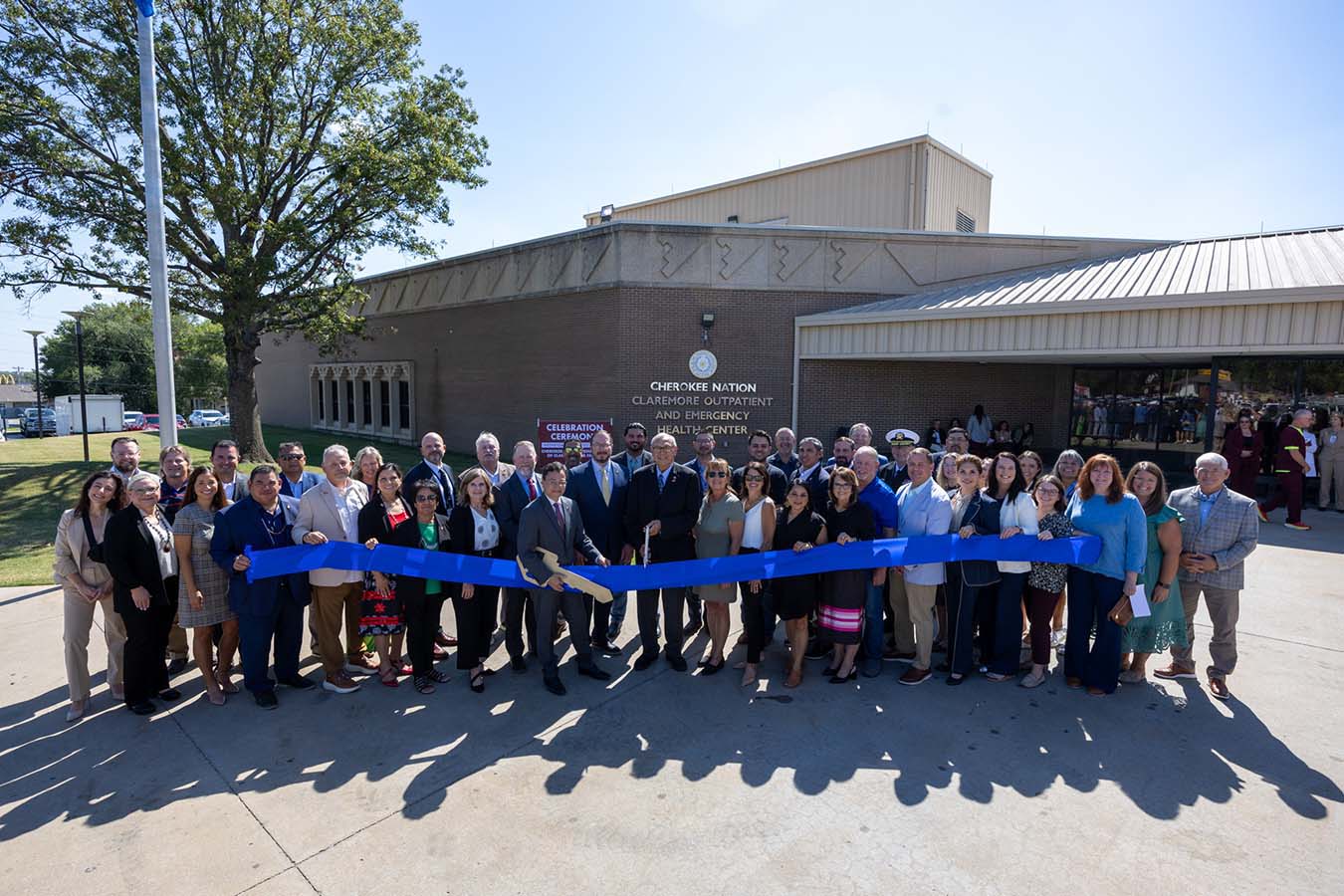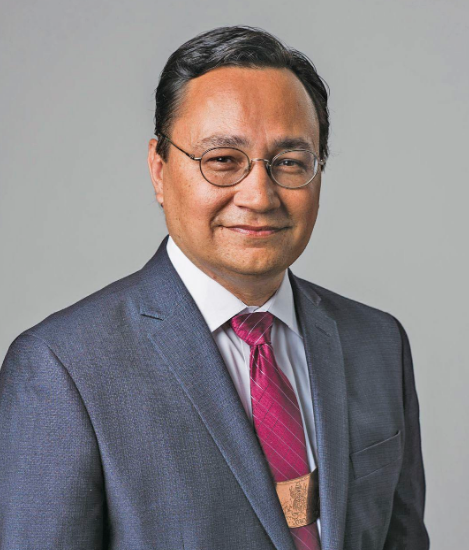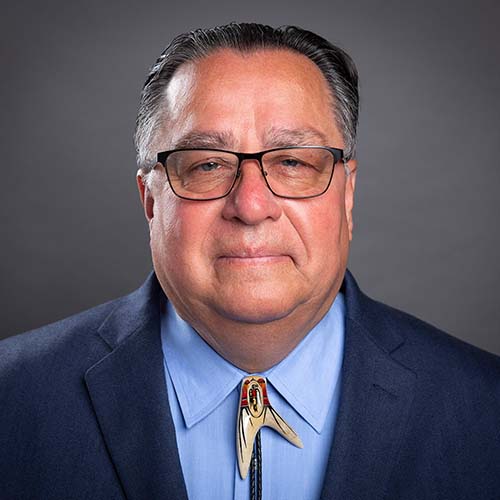
- Details
- By Chuck Hoskin Jr
Guest Opinion. Cherokee Nation celebrated a historic milestone this week: the transfer of the Claremore Indian Hospital from the federal Indian Health Service to Cherokee Nation’s control. That facility had been the last federally operated medical facility within our Reservation, and this transfer officially took effect Oct. 1, the first day of our tribe’s new fiscal year.
We have been on a rescue mission to save the Claremore facility from decades of federal neglect and that mission is going to happen now that it is under Cherokee authority. Going forward, it will be known as the Claremore Outpatient and Emergency Health Center, and the facility is now integrated into our Cherokee Nation Health Services system, which serves more than 2 million patient visits each year.
This represents more than a change in management — it represents a promise to deliver the world-class care our people deserve. By assuming responsibility, Cherokee Nation is bringing accountability, quality, and vision to the health care citizens in northeast Oklahoma receive.

Immediately, we will invest $11 million in upgrades to bring the current facility up to our standard. Beyond that, we are committing another $244 million for a new, modern replacement facility that will feature advanced emergency care, outpatient services, and a wellness center.
In the meantime, partnerships, including an agreement with Hillcrest Hospital Claremore for obstetric care, will help ensure continuity of services for our patients.
We have also offered employment to the vast majority of Claremore hospital staff, giving them stability while strengthening our workforce. That is sovereignty in action.
This transition did not happen overnight. It was the product of several years of planning and negotiations, and it was shaped by Cherokee Nation’s active participation in the U.S. Health and Human Services Secretary’s Tribal Advisory Committee.
In that forum, we made our voices heard as policies and programs were shaped, culminating in this historic transfer. I was honored to sit with Health and Human Services Secretary Robert F. Kennedy Jr. last month as we signed the agreement, proving that when tribal nations are at the table, progress and success is sure to follow, especially when it comes to health care delivery for our people.
The milestone also affirms the enduring power of the Indian Self-Determination and Education Assistance Act, which was enacted 50 years ago. That law recognized a truth that we have proven time and again: tribes know best how to care for their people. Self-governance is not theoretical, it is real, and Cherokee Nation embodies it every day.
Our Nation is stronger because we design and deliver programs in health care, education, housing, and justice that reflect our Cherokee values.
I recently testified before the U.S. Senate Committee on Indian Affairs to share this fact: Cherokee Nation can spend dollars more wisely and deliver better results than the federal government ever could. But challenges remain — federal underfunding, delays, and outdated oversight structures still hinder tribal nations. As we celebrate the anniversary of ISDEAA and this milestone for our Nation, let us recommit ourselves to the law’s founding principle: that tribes are effective and capable governments.
Cherokee Nation is stronger today because we embraced the challenge of self-governance. When we take responsibility for our communities’ health and welfare, we prove its power. The assumption of Claremore Hospital is not just the end of an era of federal control; it is the beginning of a new era of Cherokee-led health care, built to last generations.
Chuck Hoskin, Jr. is the principal chief of the Cherokee Nation.
More Stories Like This
Thanksgiving: Part of "Broken Circle Holiday"Thanksgiving is a Tradition. It's Also a Lie
Decisions About Us, Without Us: Education Dismantling Ignores Tribal Nations
What the Seismic Shift in Indian Education Could Mean
Cherokee Nation Helps Make Rural Transit Possible
Help us tell the stories that could save Native languages and food traditions
At a critical moment for Indian Country, Native News Online is embarking on our most ambitious reporting project yet: "Cultivating Culture," a three-year investigation into two forces shaping Native community survival—food sovereignty and language revitalization.
The devastating impact of COVID-19 accelerated the loss of Native elders and with them, irreplaceable cultural knowledge. Yet across tribal communities, innovative leaders are fighting back, reclaiming traditional food systems and breathing new life into Native languages. These aren't just cultural preservation efforts—they're powerful pathways to community health, healing, and resilience.
Our dedicated reporting team will spend three years documenting these stories through on-the-ground reporting in 18 tribal communities, producing over 200 in-depth stories, 18 podcast episodes, and multimedia content that amplifies Indigenous voices. We'll show policymakers, funders, and allies how cultural restoration directly impacts physical and mental wellness while celebrating successful models of sovereignty and self-determination.
This isn't corporate media parachuting into Indian Country for a quick story. This is sustained, relationship-based journalism by Native reporters who understand these communities. It's "Warrior Journalism"—fearless reporting that serves the 5.5 million readers who depend on us for news that mainstream media often ignores.
We need your help right now. While we've secured partial funding, we're still $450,000 short of our three-year budget. Our immediate goal is $25,000 this month to keep this critical work moving forward—funding reporter salaries, travel to remote communities, photography, and the deep reporting these stories deserve.
Every dollar directly supports Indigenous journalists telling Indigenous stories. Whether it's $5 or $50, your contribution ensures these vital narratives of resilience, innovation, and hope don't disappear into silence.
 The stakes couldn't be higher. Native languages are being lost at an alarming rate. Food insecurity plagues many tribal communities. But solutions are emerging, and these stories need to be told.
The stakes couldn't be higher. Native languages are being lost at an alarming rate. Food insecurity plagues many tribal communities. But solutions are emerging, and these stories need to be told.
Support independent Native journalism. Fund the stories that matter.
Levi Rickert (Potawatomi), Editor & Publisher
